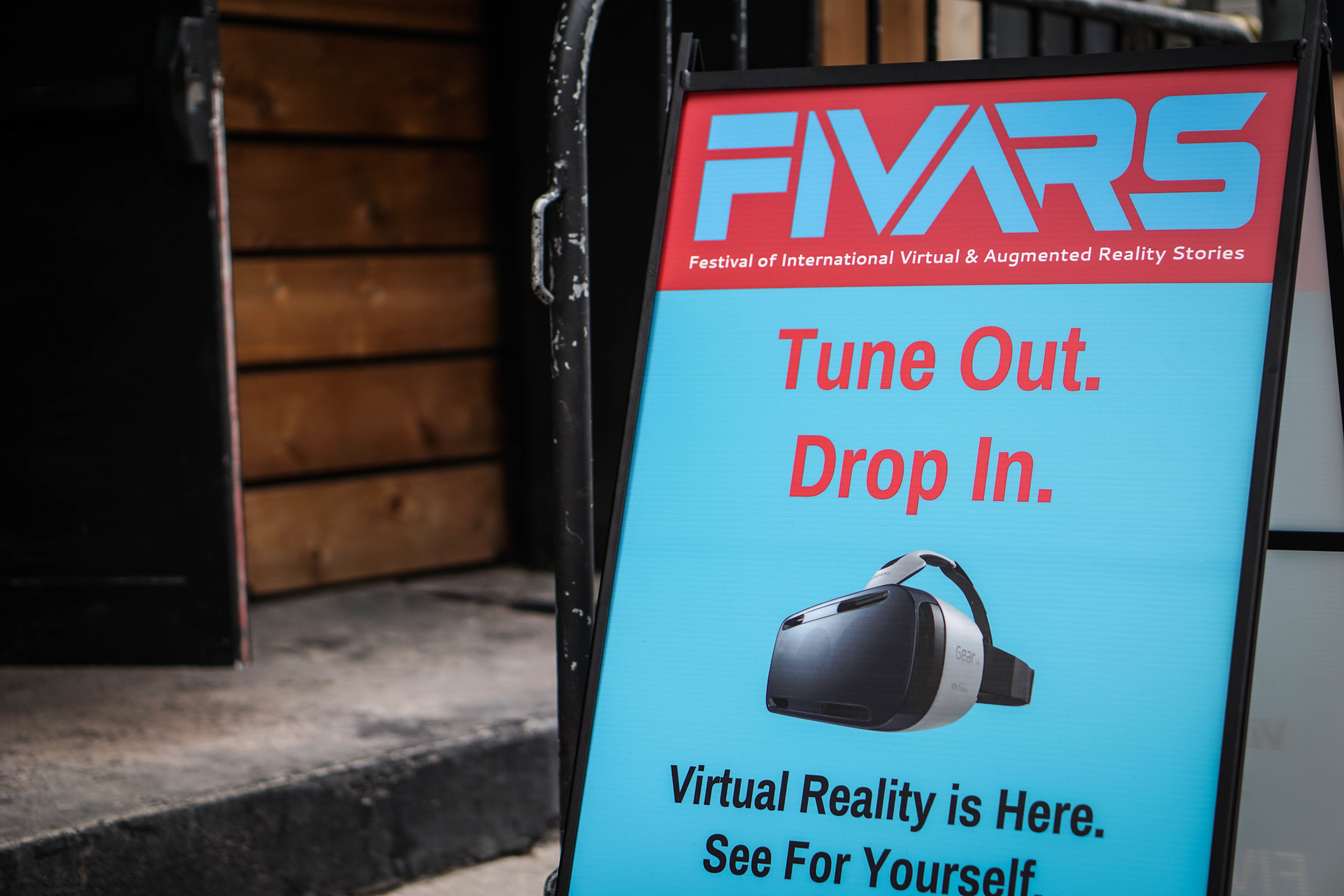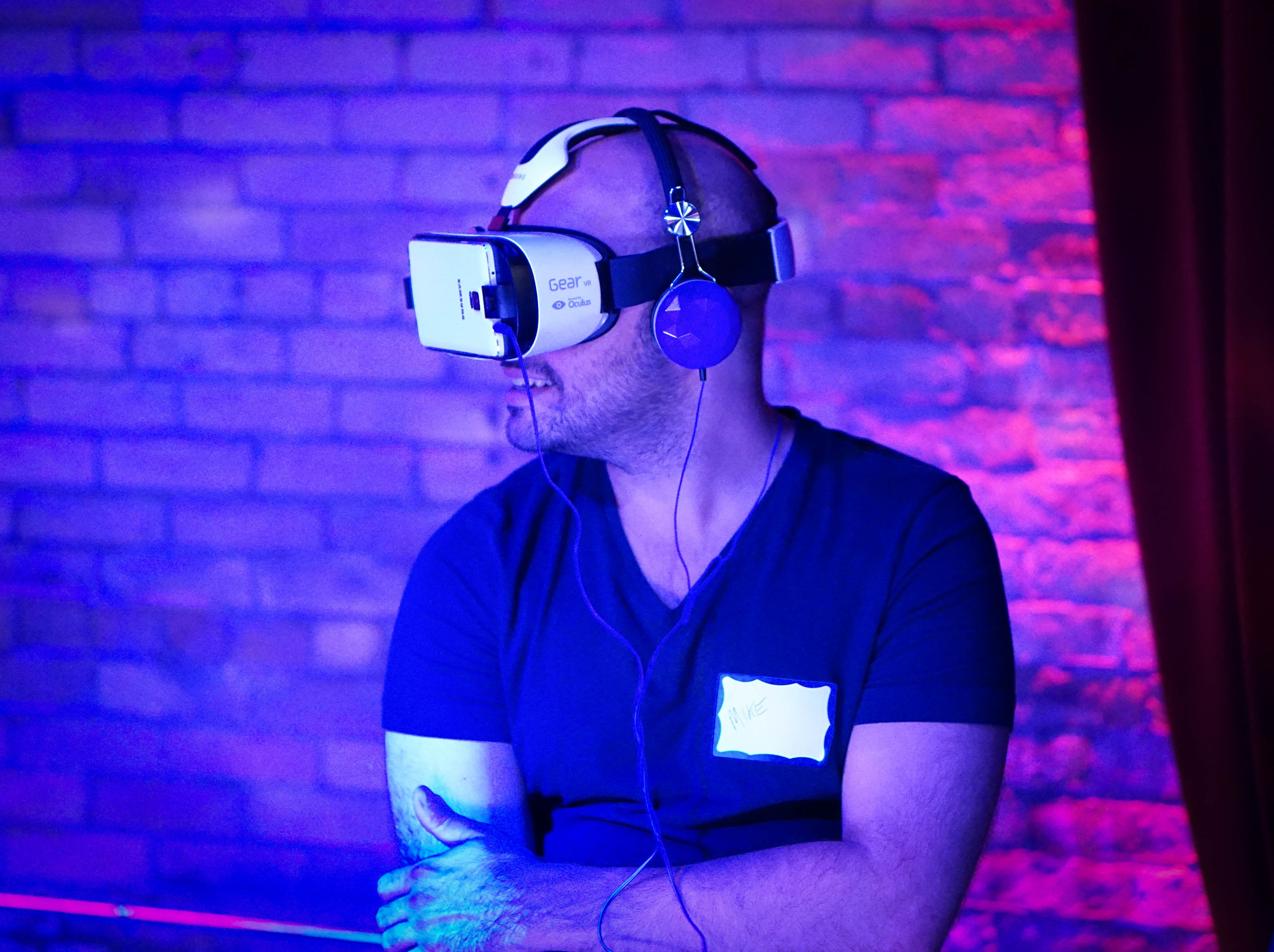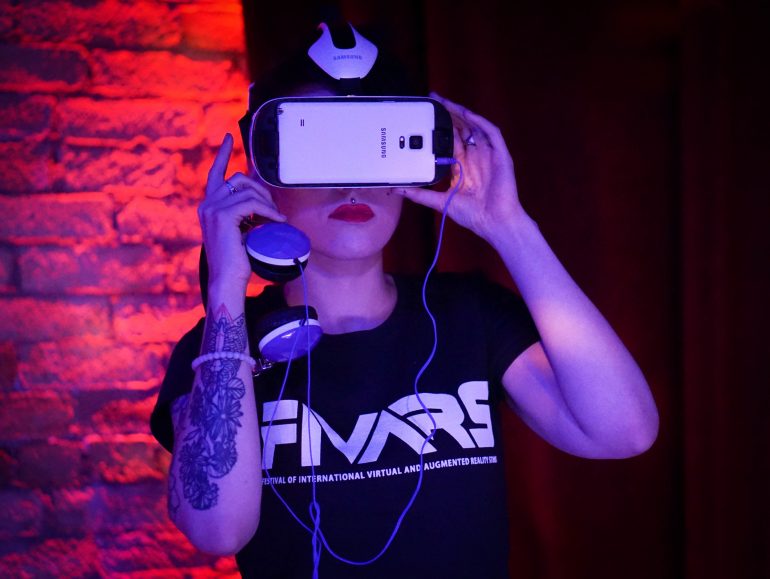Last week, all eyes were on King Street for TIFF, but around the corner from the celebrities and red carpets, a small fringe festival offered a glimpse into the future of film.
The Festival of International Virtual and Augmented Reality Stories (FIVARS, for short), took place this weekend at UG3 Live at 77 Peter Street in Toronto. Presented by VRTO, a Toronto-based Virtual Reality Meetup group, FIVARS aimed to demonstrate how new technologies are changing the way we create, share, and consume stories.

“We’ve selected twenty experiences that address the challenge of storytelling in a 360-degree space,” founding director and festival curator Keram Malicki-Sanchez told me. “FIVARS is focused on narrative that exists outside of the traditional film format. In fact, we’re not using the word ‘film’ because these stories buck all the conventions of cinema.”
Unlike appointment cinema, films at this festival were viewed with headsets like Oculus Rift and Samsung Gear. Viewing stations staffed with festival volunteers were dispersed throughout the dark venue. I watched three films, all of which admittedly caused a sense of vertigo, but for different reasons.
In I Am You, (Dir. Elli Raynai) two young lovers test an app that allows them to trade consciousnesses. Raynai, a self-described cinehacker, didn’t just write and direct the ten-minute short, he also built the technology for filming it, which consists of an Oculus Rift developer’s kit, a bicycle helmet rigged with two GoPros, and some reverse-engineered gaming software. The technology transports the viewer from a passive audience member into the first-person perspective of each character. This stereoscopic view was achieved by overlaying two GoPro cameras shooting from a distance of 64 millimetres, mimicking the average distance between normal human eyes. When the character’s hands move, it takes a moment for my brain to register that these aren’t my hands moving, causing what’s known among VR communities as kinaesthetic dissonance (the mismatch between feedback or its absence from touch or motion during virtual reality experiences).
In The Night Cafe (Dir. Mac Cauley), the viewer is also immersed in the story, but this time the experience is more like a video game than a movie. Wearing an Oculus Rift headset, viewers are invited inside Vincent Van Gogh’s famous painting by the same name. Using an Xbox controller, users navigate the space: gaze out the window at the starry night, or watch Van Gogh himself as he smokes a pipe on a lonely chair.
Unlike I am You, The Night Cafe had no set narrative structure; viewers could spend as much or as little time with the film as they’d like. I was “inside” the film for less than two minutes before I had a case of full-on simulator sickness (similar to motion sickness, but caused from the perception of motion rather than motion itself).

In Intimate Strangers (Dir. Adam Cosco) the viewer becomes a voyeur placed in the middle of an apartment where a couple is having an intimate conversation (full disclosure, Adam Cosco is my brother). Turn you head to the left to watch the male character talk, turn to the right to see the female’s response, or turn right around and you find yourself in the couple’s closet pressed up against their clothes. Look around a scene to see setting details that might be missed in a traditional film (a picture of the happy couple on vacation) but spend too much time taking in the small stuff and you’ll miss an important moment of action.
While FIVARS may have been on the fringe of the Toronto International Film Festival, augmented and virtual reality storytelling are posed to move into the mainstream: just this week, the popular app Snapchat released an Augmented Reality feature called Lenses which allows users to lay digital features over selfies from their mobile phones. While a gimmicky feature such as Lenses may seem like a far cry from what we’d consider cinema, FIVARS demonstrated how experiments in VR and AR are inching us towards a new wave of 360-degree storytelling.
Despite my vertigo, the festival made clear that technology is not only changing how we’re watching movies (goodbye Blockbuster, hello Netflix) it’s also shaping the stories we’ll tell.


